Photography courtesy of Lowell Washburn, all rights reserved.
The red-headed woodpecker is one of Iowa’s best-known birds. It is also one of our most popular. Easily recognized by its redder than red head, black and white checkerboard plumage, and bluish chiseled bill; it would be hard to mistake this bird for anything else. Getting up close and personal, I’ve recently enjoyed the opportunity to observe the daily activities of a red-headed pair nesting in the woodlands adjacent to Clear Lake’s south shore.
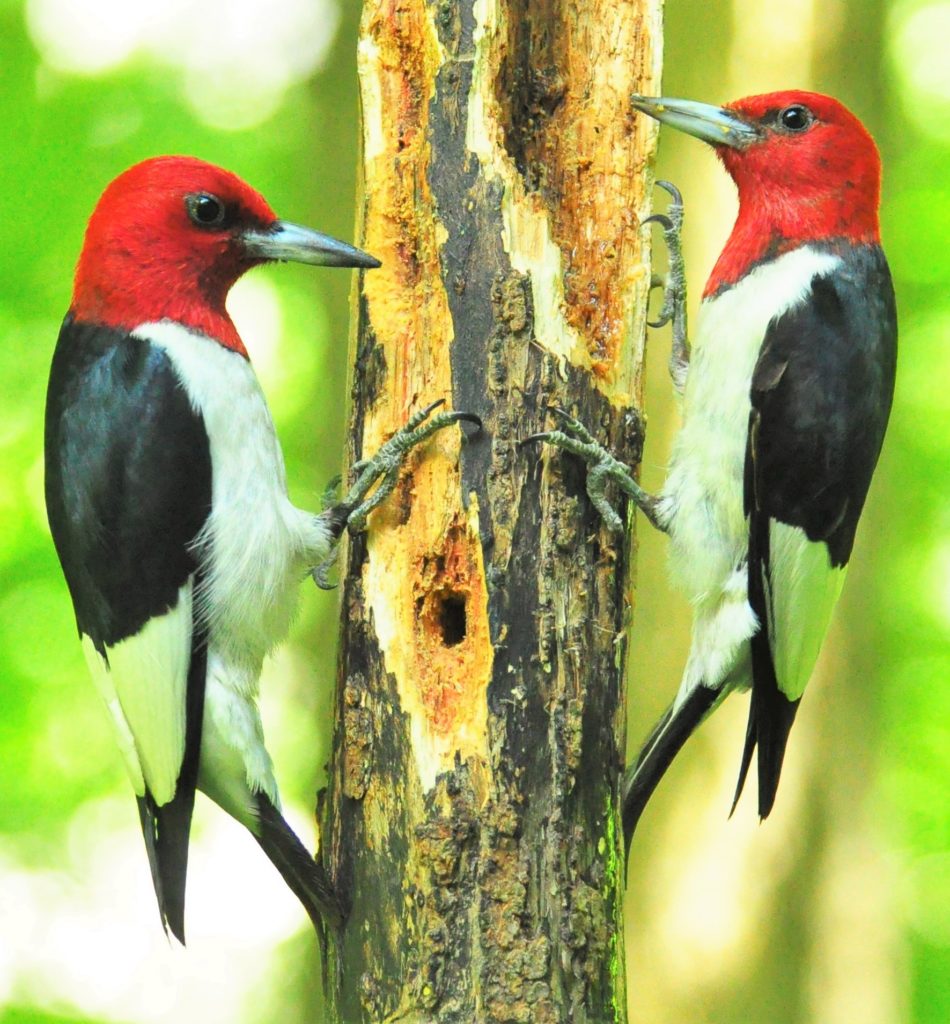
The red-headed woodpecker is an amazing creature. Like all woodpeckers, the red-headed uses its built-in, chisel-shaped bill to excavate its nest site – which in this case is a four-inch-wide, fifteen-inch deep cavity. Most, but not all, nests are bored into dead wood. Always amazing, the feat is never more remarkable than when the birds decide to tunnel into the seemingly impenetrable wood of live oaks or brand new, hard as rock utility poles.
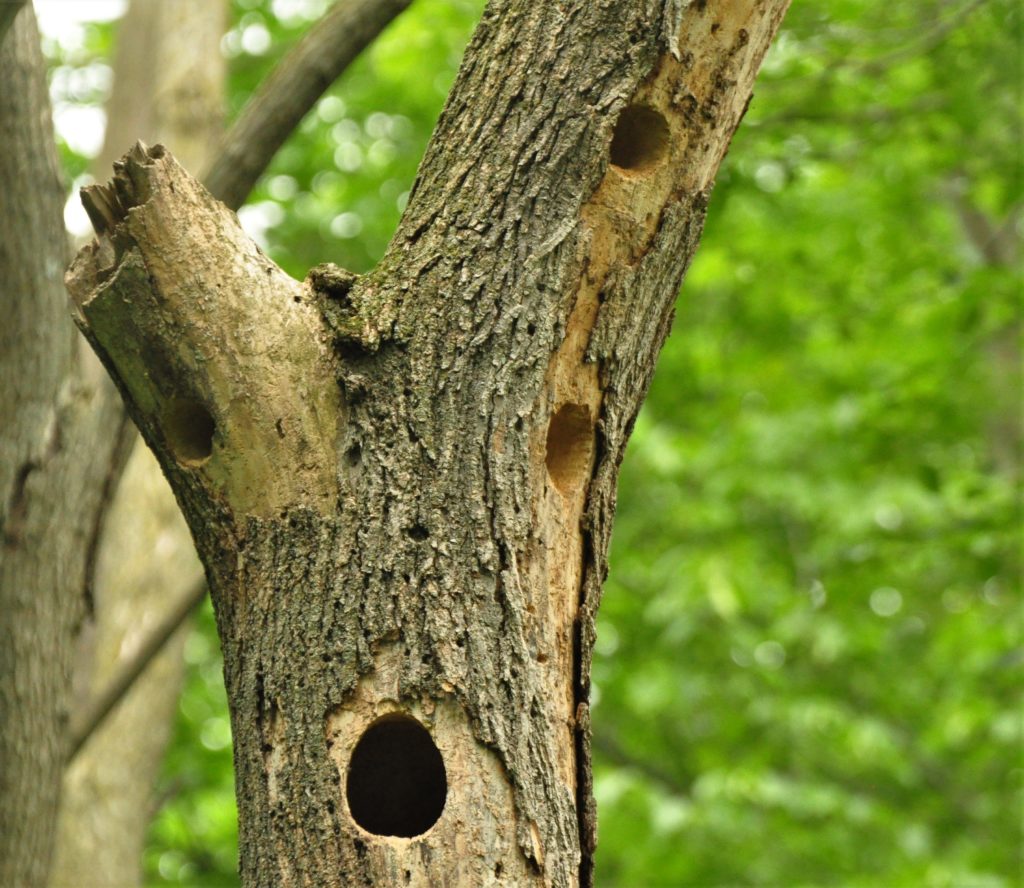
Although red-headed woodpeckers are fiercely territorial, they also have the contradictory habit of occasionally nesting in the same tree as their crow-sized cousin, the pileated woodpecker. I’ve stumbled across a couple of these duel nesting sites for myself. My most recent discovery occurred this summer at Clear Lake where pileated and red-headed woodpeckers simultaneously nested in the same snag at The Nature Conservancy’s Clausen’s Cove near Farmer’s Beach.
While rearing their young, the pileated’s diet consisted primarily of carpenter ants. By contrast, the red-headed’s diet varied widely as the summer progressed. Insects, grubs and spiders provided a daily staple during late June and early July; with the ever-juicy daddy long legs becoming a favored entree. But when the berries of the annual mulberry crop finally turned purple, these sugar laden taste treats became the mainstay for the adults and growing nestlings.
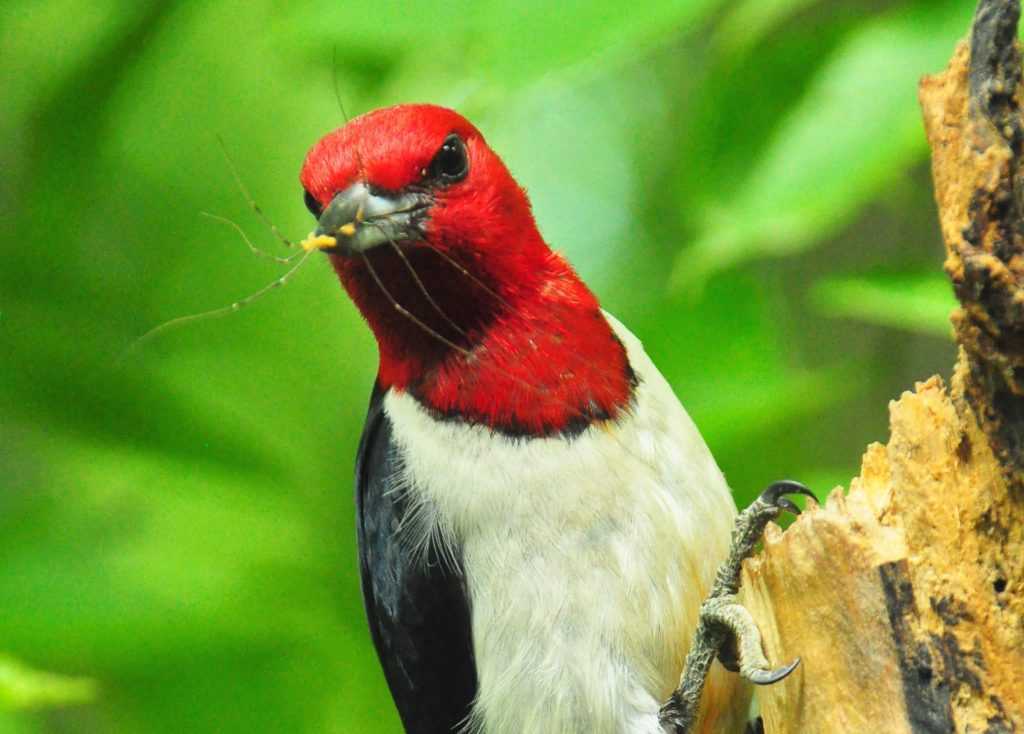
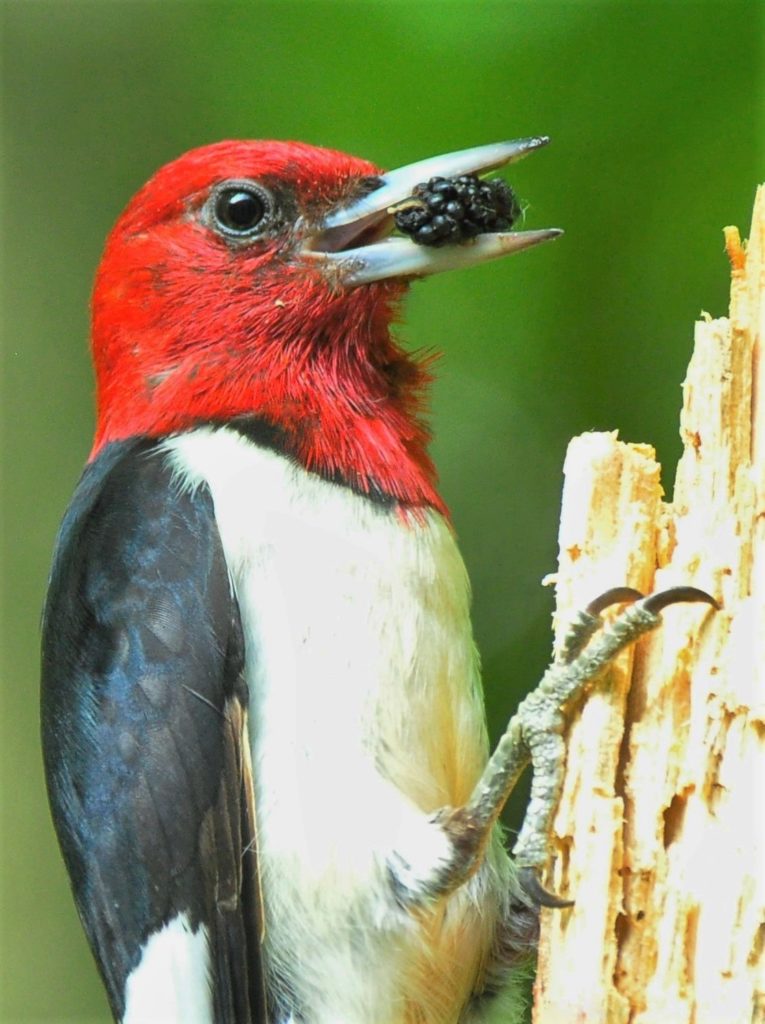
The red-headed’s sweet tooth is nothing new. During the 1700’s Colonial Era, the birds’ acute fondness for ripening fruit posed an eminent threat to domestic orchard crops. So much so, that enterprising gunners were paid cash bounties for woodpecker scalps. Although the practice would seem abhorrent today, human persecution appears to have had little effect. More than a half century later, wildlife artist John James Audubon marveled at the species’ unfathomable abundance. In 1840, Audubon noted that 100 red-headed woodpeckers where shot in one day from a single cherry tree.
More than any other woodpecker, red-headeds are aerially adept at catching insects on the fly. Unfortunately, their hunts often occur where traffic injured insects concentrate alongside busy roadways, leading to the greatest vehicle mortality of any woodpecker species. During the 1950s and early ‘60s, it was not uncommon for vehicles to overheat when radiator grills became clogged with the combined carcasses of Monarch butterflies and road killed red-headed woodpeckers – a sobering reminder of both species’ former abundance in Iowa.
In contrast to many bird species, it is not uncommon for red-headed woodpeckers to produce two broods per season. The pair I observed this summer was no exception, with the second brood fledging on July 22. Until this summer, it had been several seasons since I’d seen juvenile, young-of-the-year red-headed woodpeckers in the woodlands I frequent. No surprise. Data collected during the North American Breeding Bird Surveys indicate that the number of red-headed woodpeckers has been on the wane, declining by an alarming 70 percent across much of its range – including Iowa – since 1966. In Iowa, red-headed woodpeckers suffered a disastrous 8 percent annual decrease from 1980 to 1994 — one of the most dramatic declines listed for any species. Although this alarming rate of decrease has slowed, redheaded woodpeckers will ultimately disappear from many Iowa habitats if current trends continue.
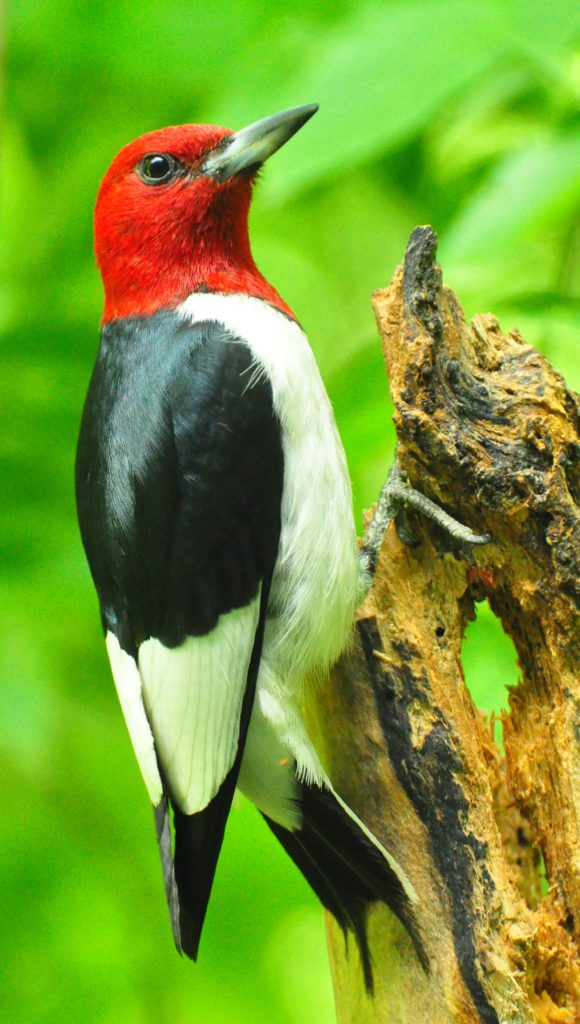
Although no one can pinpoint the exact cause of the woodpecker’s widespread decline, scientists speculate the demise can likely be attributed to a variety of factors. An ongoing loss of wooded habitat is a likely culprit, of course. Forest reduction, woodlot and fenceline removal, flood plain clear cuts, and the removal of dead trees for esthetic purposes are all practices that effectively reduce the number of potential nest sites. The invasion of European starlings could also figure into the decline. Starlings are ultra-aggressive competitors that often evict red-headed pairs from nest cavities the woodpeckers have excavated.
Although numbers are down, the red-headed woodpecker remains one of Iowa’s most widespread bird species. And while we’ll never again see the abundance witnessed by our Colonial forbearers, we will hopefully preserve enough woodland habitat that future generations will be able to observe and enjoy one of our most popular and strikingly beautiful songbirds.

 Tom Cope
Tom Cope Sue Wilkinson
Sue Wilkinson Susan Judkins Josten
Susan Judkins Josten Rudi Roeslein
Rudi Roeslein Elyssa McFarland
Elyssa McFarland Mark Langgin
Mark Langgin Adam Janke
Adam Janke Joe Henry
Joe Henry Kristin Ashenbrenner
Kristin Ashenbrenner Joe Wilkinson
Joe Wilkinson Dr. Tammy Mildenstein
Dr. Tammy Mildenstein Sean McMahon
Sean McMahon